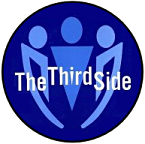
| Note Regarding External Links on This Page We are still in the process of converting the "external resource" links from our old computer system to our new one. Unfortunately, this is a time-consuming task which, because of limited funds, we are undertaking on a time-available basis. In the meantime, many of these references can be found by using our Search Plus External Links system. |
Additional Resources for Healers
Short Examples of Healers
- Holding People Accountable in Order to Move Forward
- Forgiving a Torturer
- Moving an Entire Nation
- No Sting of Bitterness
- The Power of an Apology
- Healing as Part of Conflict Transformation
- Trauma Healing as Peace Work
Longer Case Studies of Healers and other Third Siders in Action
A number of case studies have been developed to exhibit:
- How the third side gets mobilized and becomes active; and
- What the most significant barriers to the third side's emergence are, and why these have proven so difficult to overcome.
These case studies are excellent resources for teachers, study groups, or others interested in the role of the healer (and other third-sider roles) in actual conflict situations.
- Tuzla, The Third Side, and the Bosnian War, by Joshua N. Weiss, Ph.D.
- The Role of Third Side in Peace Talk: Toward Effective Means of Dispute Resolution: The Case of the 1994 Nuclear Crisis between the United States and the DPRK, by Chang In Shin, Ph.D.
- "Whose Land Is It Anyway?" The Third Side's Response to Indian Land Claim Conflicts in Upstate New York, by Brian Blancke and Bianca Wulff
- TB in Peru: How the Third Side Mobilized a Global Response to a Burgeoning Health Crisis, by Rebecca J. Wolfe
Internet Resources
- International Reconciliation Coalition - This organization offers newsletters, articles and more with information regarding the process of reconciliation. It seeks to educate people about reconciliation in a way that fosters people's relationship with God.
- Trauma Research Net - This organization is dedicated to researching various forms of trauma people can experience. It has several publications, which are all listed on the website, and holds conferences to discuss trauma and trauma healing.
- Victim Offender Reconciliation Program Information and Resource Center - Our mission is to bring restorative justice reform to our criminal and juvenile justice systems. The Center specializes in providing victim-offender mediation and reconciliation services in cases of severely violent crimes, including homicides.
- Center for the Study of Mind and Human Interaction at the University of Virginia - CSMHI is on the forefront of studies in large-group dynamics and applies a growing theoretical and field-proven base of knowledge to issues such as ethnic tension, racism, national identity, terrorism, societal trauma, leader-follower relationships, and other aspects of national and international conflict.
- South Africa's Truth and Reconciliation Commission - The Commission is based on the understanding that "...a commission is a necessary exercise to enable South Africans to come to terms with their past on a morally accepted basis and to advance the cause of reconciliation."
Print Resources
- Washington, R. and G. Kehrein (1996). Breaking Down Walls: A Model for Reconciliation in an Age of Racial Strife. Moody Press.
- Menkin, E.S. and L. Baker. "I Forgave My Sister's Killer: I Couldn't Begin to Heal Until I Let Go of My Hatred." Ladies' Home Journal, December 1995.
- Price, M. "Victim-Offender Mediation: The State of the Art." VOMA Quarterly Volume 7, Number 3: Fall-Winter 1996.
- Ury, William (2000). The Third Side: Why We Fight and How We Can Stop. New York: Penguin. This is the book that first described the concept of the "third side and explained the healer role in that context.
- Volkan, V. and Zintl, E. (1993). Life After Loss: Lessons of Grief. New York: Charles Scribner's Sons.
For More Information
Much of the material on this user guide is drawn from www.thirdside.org. Thanks to William Ury and Joshua Weiss for giving us permission to republish their material here.










